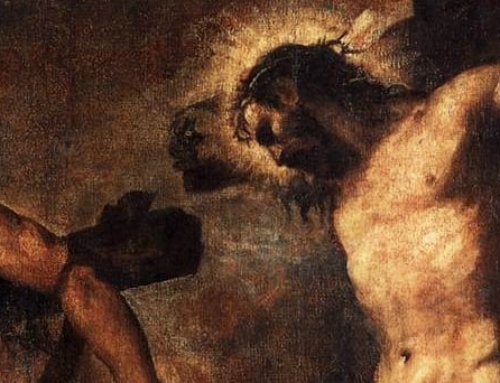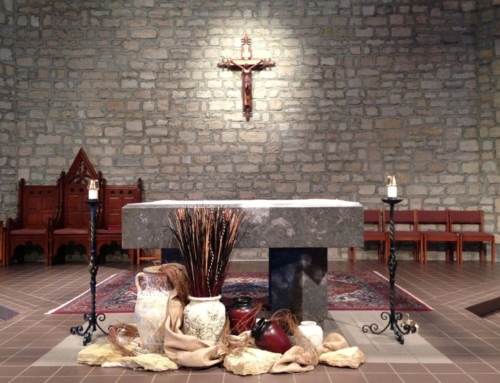I didn’t blog or tweet about the terrible fire at Notre Dame yesterday because I was traveling, but I’ve also learned not to make instant remarks about breaking news events when all the facts aren’t in. Looking back on some of the comments about Notre Dame being “utterly destroyed” makes one cringe.
Yes, the blaze was a disaster, and the raging fire looked like the whole place must have been destroyed. It was easy to draw this conclusion because we know that a fire burns UP and assume the fire started below and must have burned everything in the nave it before it reached the roof.
However, this is not what happened. In fact this could not happen in a building like Notre Dame. This is down to the way the church is designed. The whole building, except for the roof is constructed from stone. The ceiling of the nave is a vault designed by interlocking arches all built from stone. This acts like a cap covering the nave. To protect the vaulting, on top of that is the comparatively lightweight wooden roof structure which is invisible to anyone in the interior. It is this wooden roof which went up in flames, and the fire apparently started there in what is essentially attic space.
If a fire started at floor level it could have gutted the interior, but it would have been almost impossible for the flames to reach the height of the roof beams, and even if the fire went that high it would have to burn through the stone vault to reach the roof beams.
This design element explains why most of the interior was spared and why the restoration will not be that long or that expensive. They will have to repair the damage to the vault where, I believe the central spire crashed through the stone vaulting, and they will have to design and build a new roof, at least that’s how it looks this morning.
But the fire breaking out in the roof space does open up more questions. If all the workers and members of the public had already left the building how did the fire break out in that attic space on the other side of the stone vault? The cathedral was being restored. Was that area being restored? I believe the central spire (which by the way was a comparatively modern addition–having been created by the Victorian restorer-architect Viollet le Duc) was being restored. What started the fire in the roof space?
Was it arson?
There has been a rash of vandalism including suspected arson attacks on French churches in recent weeks, and there is a mysterious video circulating of an individual in the balcony space of the two towers of Notre Dame after the blaze had already started. Furthermore, three years ago some jihadist women were arrested for planning to blow up Notre Dame. One of them, Ines Madani, was just sentenced on Friday to eight years in prison. The co-incidence with Ines Madani’s sentencing is very disturbing.
Tourists have access to the balcony space of the two towers and one assumes access to the roof space is at that level. Could someone have hidden up there and then after the cathedral closed entered the roof space and started the fire? I guess it could be possible.
Of course the fire could have started in the roof space by itself. Workers may have left an appliance on and it overheated. A tossed cigarette smoldered on some oily rags. Solvents may have brewed together and burst into flame. The roof of the spire was sheathed in lead. Maybe the process to restore the lead involved smelting and a small furnace which overheated. The fire investigators will do their job, and the French police will do their job.
Until we have the facts we’ll just have to wait and see, and hope and pray that those involved in the Cathedral’s restoration take the opportunity to restore it with faith, humility and common sense.
We had a fire in the medieval village church where I was Anglican vicar. We despaired at first, but because the church was built in stone and the roof had been spared we ended up with a beautifully restored building. It rose from the ashes and was better than ever.
Pessimists used the fire yesterday to comment on the sad state of Catholicism in Western Europe. The fire could be read as a symbol of that to be sure, but let’s pray that instead the restoration of the Cathedral will become a sign not only of the beauty, but also of the durability of our faith.
The restoration of the cathedral is not only a sign of Our Lady of Sorrows and the crisis of faith in Europe, but let’s pray that Notre Dame’s restoration will be a sign of Our Lady’s ultimate triumph in her son’s glorious resurrection.






“In the end, my Immaculate Heart will triumph” – Our Lady of Fatima
Thank you, Father, especially for those last two paragraphs.
Thanks for adding some sanity to the “hair on fire” panic I have been seeing in the news.